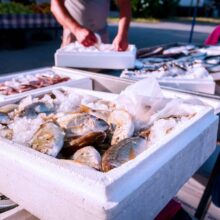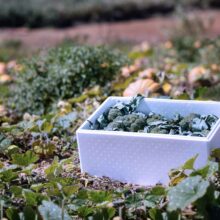EPS, XPS, Styropor, Styrofoam? Keep your plastics straight, please!
European media and politicians seem hopelessly confused when it comes to EPS.
Brussels —Expanded polystyrene, or EPS, accounts for about 3% of all of all plastic sold in Europe. But you would never guess that from reading many media or policy reports.
In Germany, headlines using the EPS brand name Styropor blare that “One-way Styropor packaging will disappear” and Focus magazine reported that “Styropor grocery and drink containers are banned”. Never mind that there are hardly any such EPS packages on the market in Germany or, for that matter, throughout most of Europe!
German journalists have also refered to “Styropor wrappers” while French legislation refers to “EPS bottles” – neither of which exist.
Single-Use Plastics confusion
EPS, Styropor—also known as polistirolo, polystyrene expansé, Airpop and Flamingo in other countries—has become the subject of widespread confusion in European media and halls of power. The reason? The entry into force on the 3rd of July of the EU’s Single Use Plastics Directive, which bans things like plastic straws and fast food containers.
The fact is that the packaging that’s about to disappear in the EU is almost never EPS. The Single-Use Plastics Directive does restricts uses of lots of plastic items—but hardly any EPS, and certainly not EPS packaging in general–despite what the headlines might say. EPS use has not been banned for its most common and essential uses: protecting wholesale food shipments of fresh fruit and vegetables, electronics and electrical equipment, white goods or COVID-19 vaccine shipments. That would be an own goal, wouldn’t it?
It’s also impossible to imagine EPS wrappers because EPS is rigid and does not bend around a bottle. And EPS bottles? No one has ever actually seen one.
Unfortunately, public confusion over what EPS is or isn’t has real consequences. Lawmakers from Brussels to Paris have made references to EPS in legal texts when they almost certainly intended to target something else, like clamshell fast food containers (which are XPS–see below). This demonstrates a misunderstanding of the essential uses of EPS in our lives. And in an era where social media can make or break reputations, having people malign the wrong plastic risks punishing the wrong products and the entire economy around them.
In the interest of contributing to the global fight against disinformation, here’s Smart Packaging Europe’s primer on what EPS is and isn’t.
EPS or not EPS?
- “Expanded polystyrene straws, Q‑tips, coffee cups, stirrers, cutlery and plates and bowls”? A DPA report in April said they were all about to be banned. The trouble is hardly any of these items is actually made of EPS—and EPS in general isn’t about to be banned. Straws, cotton bud sticks, beverage stirrers and cutlery are made out of other kinds of rigid, plastics… Unfortunately, the misinformation has already been picked up 6,540 times (as of 23 June 2021) and continues to circulate, as in this recent example in a local German press agency.
- EPS is composed of 98% air and just 2% polystyrene. If a plastic does not contain air and wraps or folds without breaking, it’s not EPS. Some German journalists have referred to Styropor wrappers and things like yogurt cups. Uh, that’s not EPS folks. (Likewise, when British comedian Graham Norton mocked the “Styrofoam hand” used as a prop by German singer Jendrik Sigwart in this year’s Eurovision song contest, he was confusing his plastics because XPS doesn’t bend like that, either.) One reason EPS is commonly used in specific packaging applications is that it does not bend much but absorbs shocks and insulates things effectively, and using a minimum of resources.
- EPS is not XPS. EPS is expanded It’s a foamed plastic that is mostly used in building insulation, packaging and personal protective equipment such as bicycle helmets. XPS is extruded polystyrene, and also has a variety of uses. Each has properties that makes it the best and most sustainable material for the applications where it is commonly used. However, they are not the same and are produced in a different process. If you look just a little closer, you can tell them apart: For the production of EPS, granulate is filled into a mould and foamed in hot steam. The particles of the granulate stick together, but usually do not completely fuse with one another. The spherical, foamed granulate is often recognisable in the end product and sometimes even a single grain can be separated. XPS has a finer and denser foam structure.
- Styropor is not Styrofoam—despite what Google Translate says! For one thing, Styropor is a registered trademark of German chemical group BASF AG and is EPS, while Styrofoam is a registered trademark of the Dow Chemical Company and is XPS. Sorry, Google, but translating Styropor in German into Styrofoam in English is like calling a Coke a Pepsi or mixing up German Chancellor Angela Merkel with U.S. President Joe Biden. (Smart Packaging Europe has already asked Google to correct this mistranslation three times, so far without success.)
- If it’s suspended in the sea, it’s not EPS. It’s pretty simple: EPS floats, so if you find plastic suspended in the water column or on the sea bed, it’s almost certainly not EPS. While we don’t want any litter (plastic or other materials), anywhere in the environment, the distinction is crucial because only 15% of marine debris floats on the sea surface; another 15% remains in the water column, and 70% rests on the seabed – and generally, EPS cannot be any part of the 85% that’s below the surface.
- EPS bottle? Probably not. EPS can protect wine bottles and beer bottles and other bottles from breakage, mind you, but if you’re looking at a clear plastic bottle that’s probably PET, which stands for polyethylene terephthalate. Not at all the same thing.
- EPS is not toxic. EPS has been permissible as a food contact material and safely and widely used for the transportation of fresh fish, fruits and vegetables from farms to markets world-wide for decades. During all those years, its safety has been extensively studied and confirmed multiple times, including by EU authorities. The starting substance, styrene, by itself is hazardous, but when it is chemically transformed into the plastic polystyrene, which is then transformed into expanded polystyrene, it is non-toxic . It’s like the difference between CO (carbon monoxide, which is poisonous) and CO2 (carbon dioxide, which we breathe out). A small chemical difference can make a big difference in the way something behaves.
If you see any other good examples of EPS confusion, please let us know! We’ll be glad to add it to the collection and set people straight.



